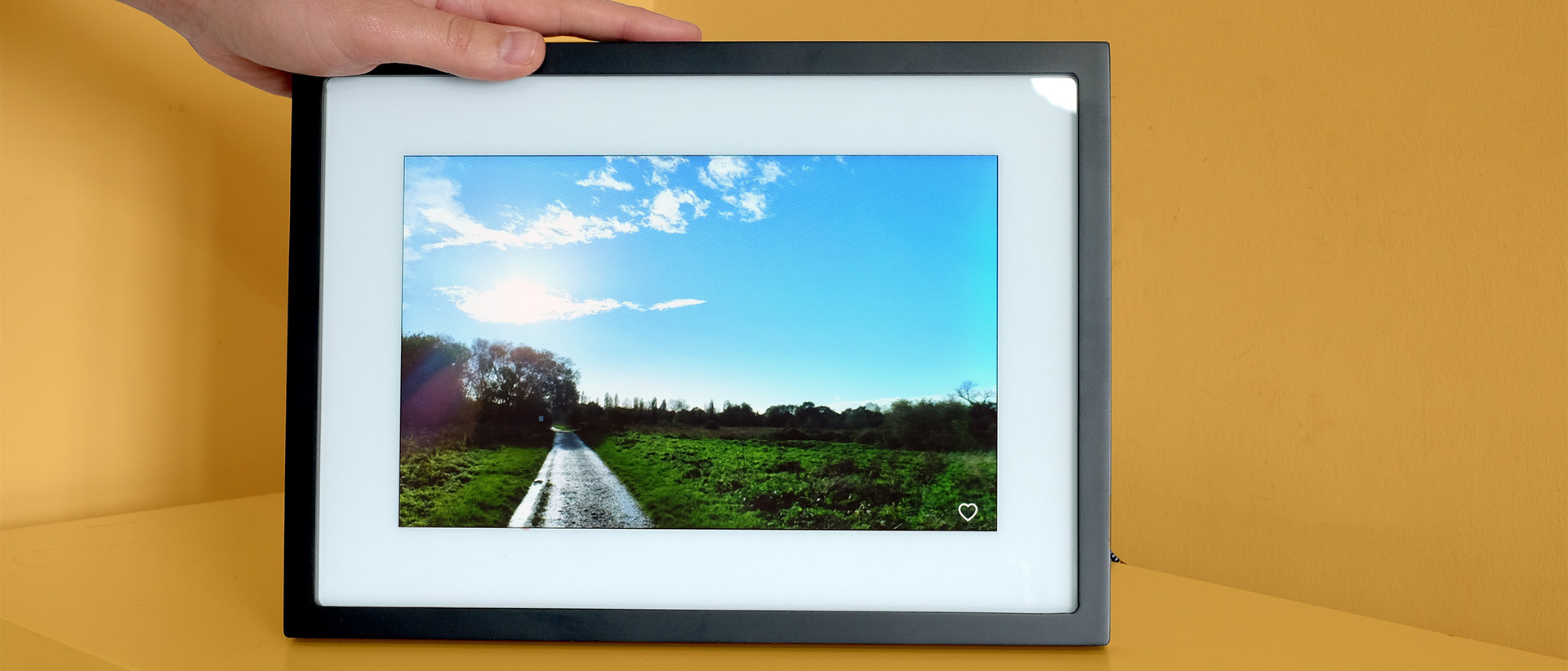TechRadar Verdict
The Skylight Frame is an impressive-looking option for those who prefer a more built-up surround for their photos. But the upsell to a paid subscription is a little keen and its image compression is a little too aggressive.
Pros
- +
Responsive glass touchscreen
- +
Classic photo frame design
- +
Easy sharing with friends and family
Cons
- -
Core features locked behind a paywall
- -
Fairly aggressive image compression
- -
Color temperature is on the cool side
Why you can trust TechRadar
Two-minute review
The Skylight Frame is one of the better-looking 10-inch photo frames you'll find on the market. It aims for a classic design that can pass for a non-digital frame at a pinch, and it's also larger than most other 10-inch display photo frames we’ve tested. This gives it a bit more presence for those with the space to spare.
Unusually, the screen covering is glass, and extends in a flat pane right up to the raised black borders of the frame itself. The vast majority of digital photo frames at this level have plastic screens, so this is a welcome touch of class.
However, there are some issues with how the Skylight photo frame operates. Multiple core features are locked behind a subscription paywall, which costs $39 £37 a year. You can’t add captions, play videos, or use albums without a sub – these limitations are more restrictive than other brands we’ve used recently.
You can still get by just fine without paying, but the reminders of what you are missing are right there on the surface of the frame’s interface and the mobile app. It can at times seem slightly crass.
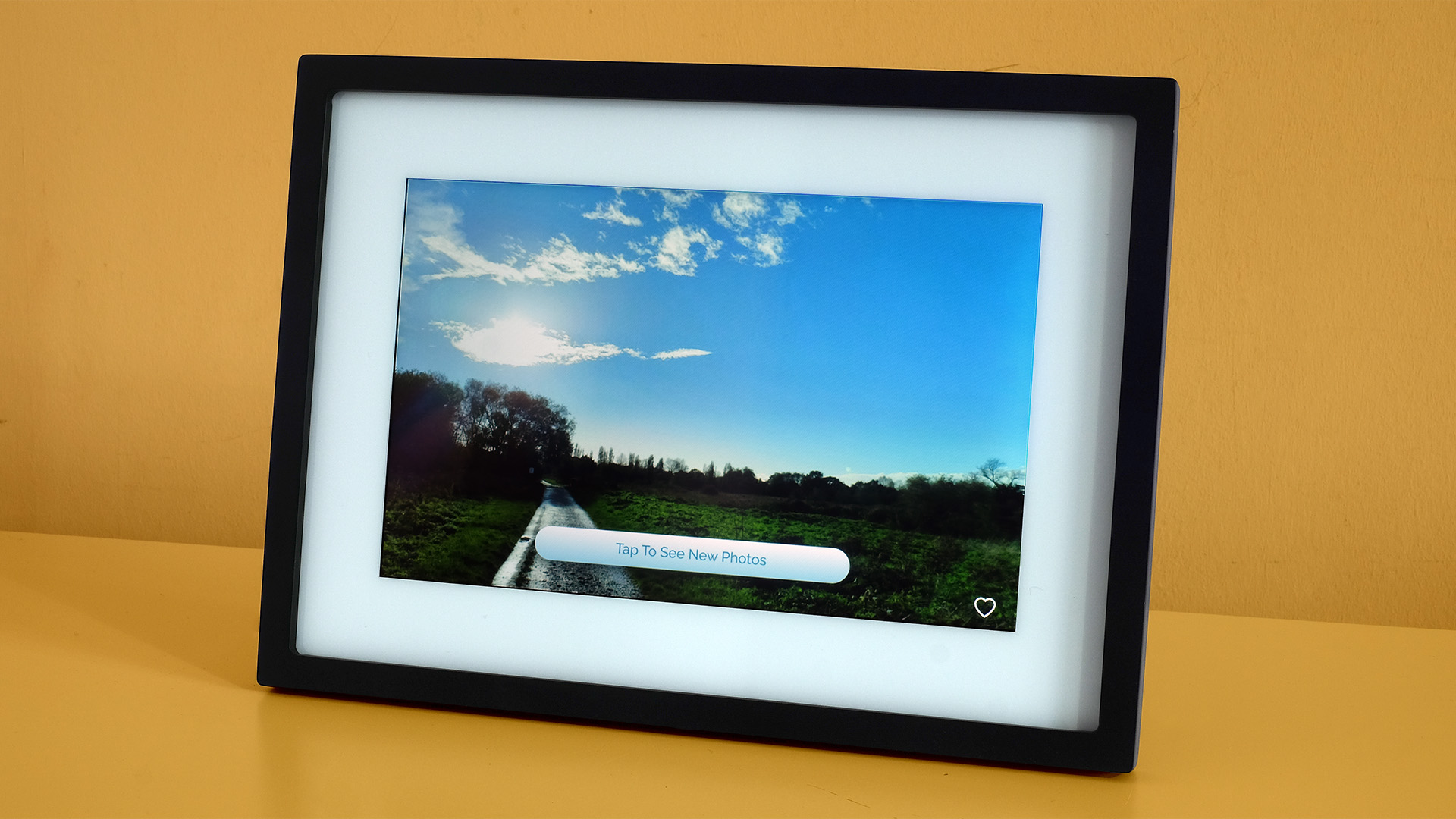
The Skylight frame also feels more like an Android tablet that happens to be in the shape of a photo frame than some others we’ve reviewed, for better or worse. You can pinch to zoom, and swipe to switch photos, and the on-screen menu system is quite extensive – unlike the elegant but stripped-back Aura frames.
We’re torn on this interface. It’s not a sophisticated look, but it all works much more smoothly than the Nixplay 10-inch Touch Screen Photo Frame and makes it a doddle to find specific pics.
However, we don't think the Skylight Frame does the best job of representing your photos. The compression used can introduce visible artifacts that can make blue skies look odd and unnatural, and images look soft, making the pinch-to-zoom feature seem a bit pointless.
Despite these reservations, the Skylight Frame earns a spot on our list of the best digital photo frames you can buy, and is certainly one to check out when it's on sale. The Skylight Frame 10-inch costs $160 / £149 / AU$219, and the company makes a 15-inch model for $300 (around £252 / AU$470), which isn't sold directly to the UK or Australia right now.
Skylight Frame: design
The Skylight Frame is significantly larger than most of the other 10-inch photo frames we’ve reviewed. It’s odd how much this can add to the look of your photos – a reminder of why frames exist in the first place.
There’s an outer black border, a good and chunky one, while the screen covering and the white surround are both covered by a single piece of glass. The Skylight photo frame feels more substantial all-round than much of the competition, but is still fairly light.
If only a heavy-duty photo frame will do, check out Skylight’s 15-inch model. It’s a lot heavier and has a serious metal stand, while the 10-inch one reviewed here just uses a plastic one that can be arranged so that the Skylight sits in portrait or landscape.
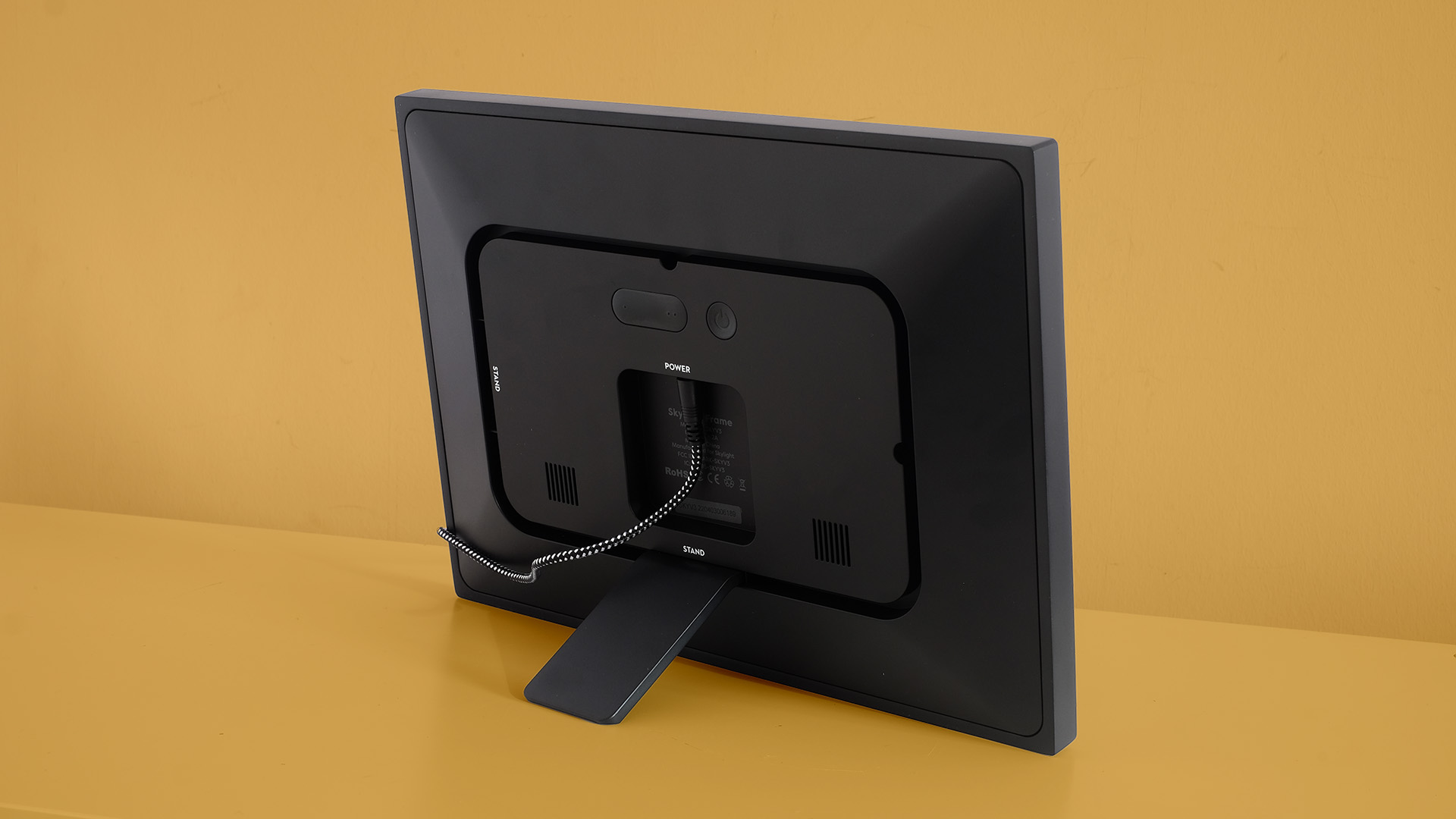
This frame has a touchscreen, but there are also some physical controls on the back. These let you power the frame on and off, and alter the volume. The Skylight Frame has a speaker for video playback, although you’ll only hear it if you pay for a Skylight Plus subscription, as it’s the only way to play videos.
The screen is a 1280x800 pixel LCD, like the majority of affordable photo frames. Its glass surface is naturally reflective, so you have to think about where you position the frame a little more than some others.
Its maximum brightness is 255 nits, which is similar to a lot of frames at this level, but way below the 444 nits of the Aura Carver. Screen intensity does not alter to suit the room either, so you may need to manually alter the brightness every now and then.
The Skylight photo frame also lacks any sensors for automatically entering sleep mode when it isn't needed. Some rivals, like the Nixplay 10-inch Touch Screen Photo Frame, have sensors that let them determine when you’re probably not in the room, but here your only tool is the schedule function. You set the Skylight’s operating hours, and let it do its thing.
This is also why we’re glad there’s an easy-to-find power button on the back, as no-one likes wasting energy. Here’s how much energy it uses according to our power meter.
| Mode | Power consumption |
| 100% brightness | 4W (0.096kWh per 24 hours) |
| 50% brightness | 3W (0.072kWh per 24 hours) |
| Standby | 1.3W (0.032kWh per 24 hours) |
Skylight Frame: usability
You use the Skylight app to shoot photos over to your photo frame. However, they are stored on the 8GB internal memory rather than Skylight’s servers. You do get cloud storage if you subscribe to Skylight Plus, but there are real benefits to this on-device approach.
Lose Wi-Fi? No problem, the frame works just fine without it, although you won’t be able to add any new images until you get reconnected. Friends and family can add images to your frame, too. The app lets you send them a link that ferries them to the app, and each Skylight photo frame gets given its own email address on initial setup.
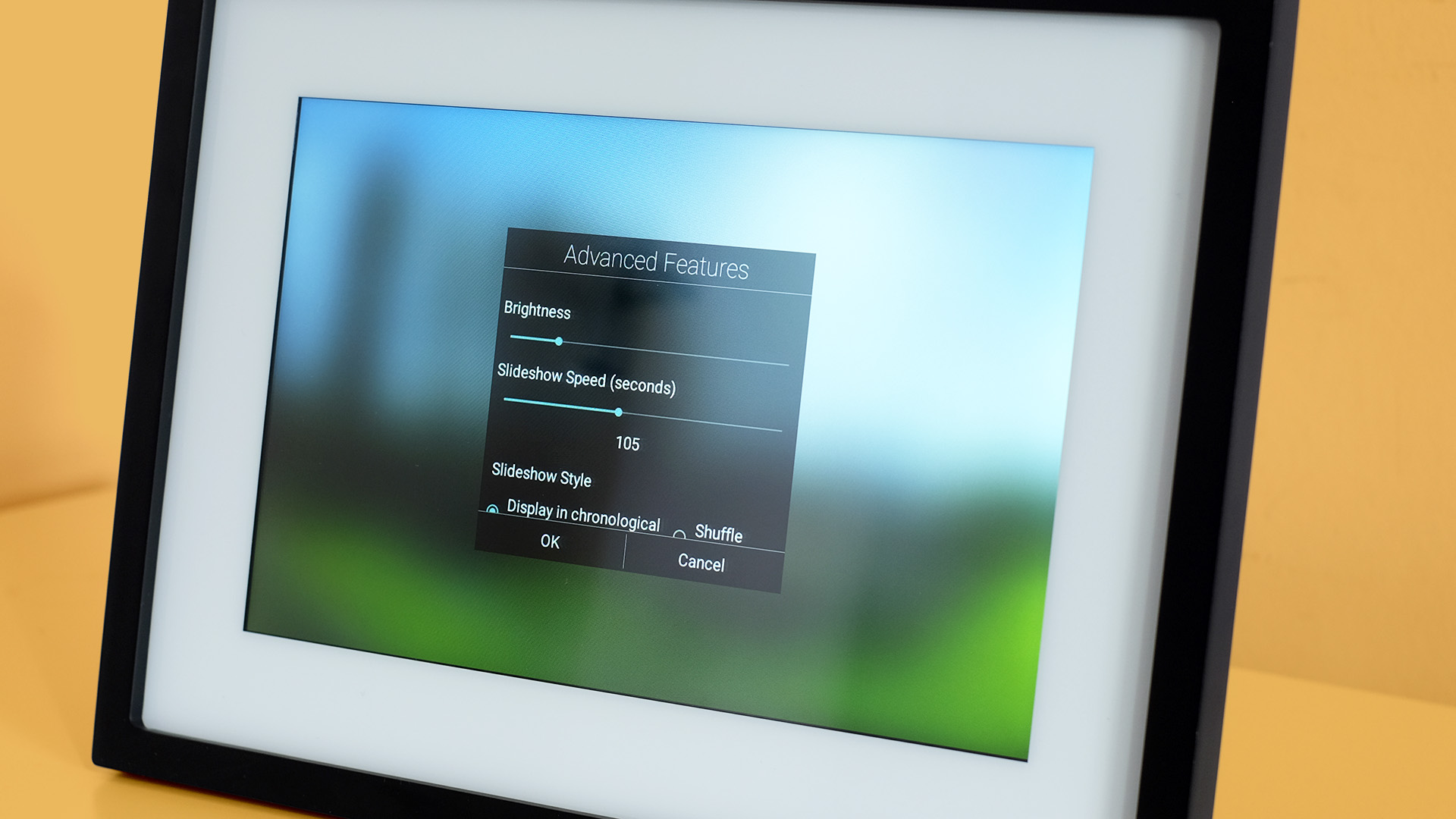
You have to approve any new addresses that try to send you images, largely avoiding potential nightmare scenarios beyond malicious exes you’ve already approved. Or you can have a totally open photo frame email address and welcome chaos with open arms – just don’t post that address on social media.
If someone sends you a photo, you can hit the heart button, which will send an email to the sender to let them know – it’s like a Facebook 'like'. Some of the more social side is locked off unless you subscribe to Skylight Plus, though, as that's needed to add comments/captions to pictures.
The app is largely pragmatic, perhaps a little less glossy than some. It also crashed a handful of times in our testing, but was generally fast and functional. The interface of the Skylight photo frame itself is very low on gloss, but is functionally pretty sharp.
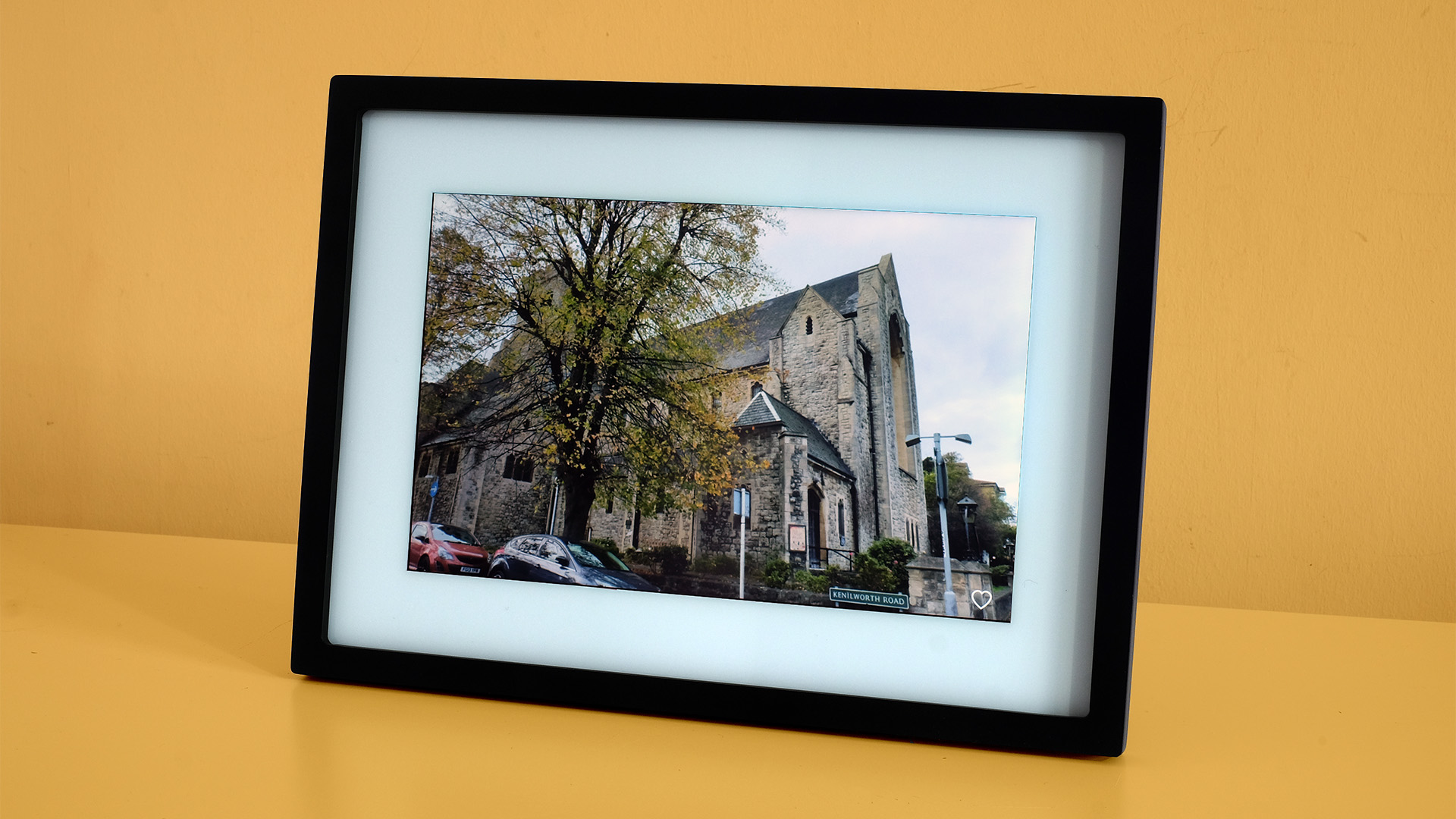
There’s a Gallery button that lets you see thumbnails of stored images. And they appear quickly because the frame doesn’t have to draw them down from a server. Flicking between pictures is responsive, and the glass surface of the screen gives everything a very tablet-like feel. That’s the vibe here: tablet.
The image quality is a bit worse than we’ve seen in other photo frames at the price, though. The screen’s color temperature is a little cool, always less flattering and easy on the eye than a warmer lilt. And Skylight’s compression also seems quite severe.
Photos appear significantly softer than in the Aura Carver or Nixplay Touch 10. And this becomes very apparent if the frame needs to crop into the image to make it fill the screen. At times, the compression can cause posterization in areas of block color too, where slight changes in color tone look like the elevation rings on a hiker’s map.
None of this is going to be too apparent, bar the minor color temperature issue, if you prep your images so they already match the shape (or even resolution) of the Skylight. But you might not want to have to do that work.
Should I buy the Skylight Frame?
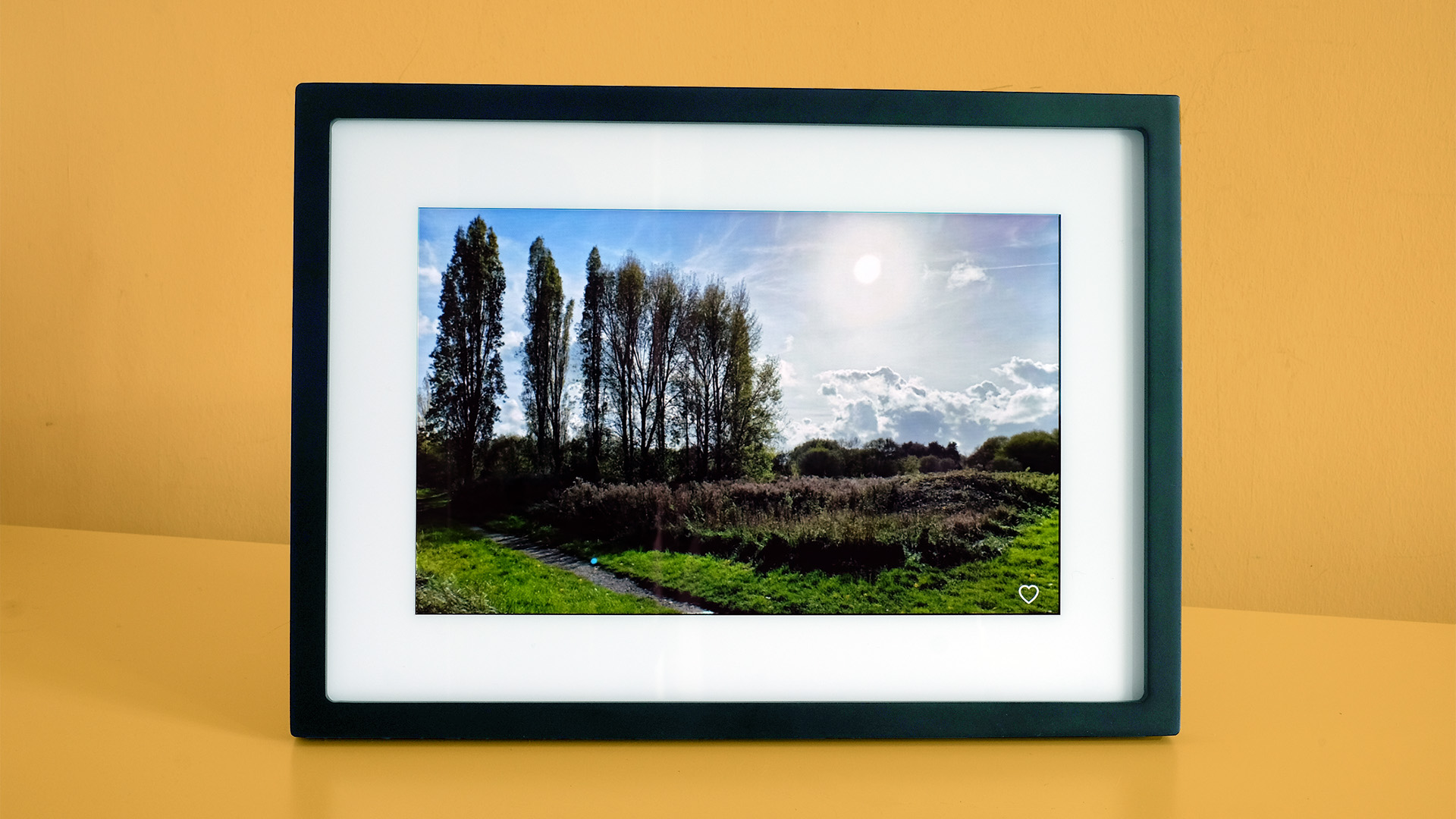
Buy it if..
You want a tablet-like feel
The Skylight photo frame feels quite a lot like a tablet in use. It has a glass touchscreen, and is quite responsive. You can flick left and right to move between photos, and look through the entire gallery.
You’d rather store photos on the frame itself
Without a Skylight Plus subscription, photos are stored on the frame’s 8GB internal storage. This lets it operate without a connection for a while, although unlike offline style frames, you will need a connection to add photos.
You want a photo frame with real presence
This is larger than a lot of the 10-inch photo frames we’ve tested, which may appeal if you’re looking to fill a bigger space. Unlike traditional consumer tech, the aim here isn’t always to make something as small as the display will possibly allow.
Don't buy if...
You’re super-picky about image quality
Skylight uses pretty aggressive compression to make your photos use less data. This causes some digital artifacts and makes images look softer than they do when shown on some rivals. They still look good, just not as good as they could.
You’ll be annoyed by locked-off features
A lot of good features are kept behind a subscription paywall. Want to upload videos, add captions to your pics or store more than the internal storage of the frame will allow? You’ll have to pay $39 / £37 a year.
You need a super-bright frame
The glossy screen surface may make reflections more of an issue than they are for Aura’s semi-matt photo frames. And with just 255 nits of brightness on tap, the display intensity is no match for a window shining directly onto the screen.
Andrew is a freelance journalist and has been writing and editing for some of the UK's top tech and lifestyle publications including TrustedReviews, Stuff, T3, TechRadar, Lifehacker and others.
